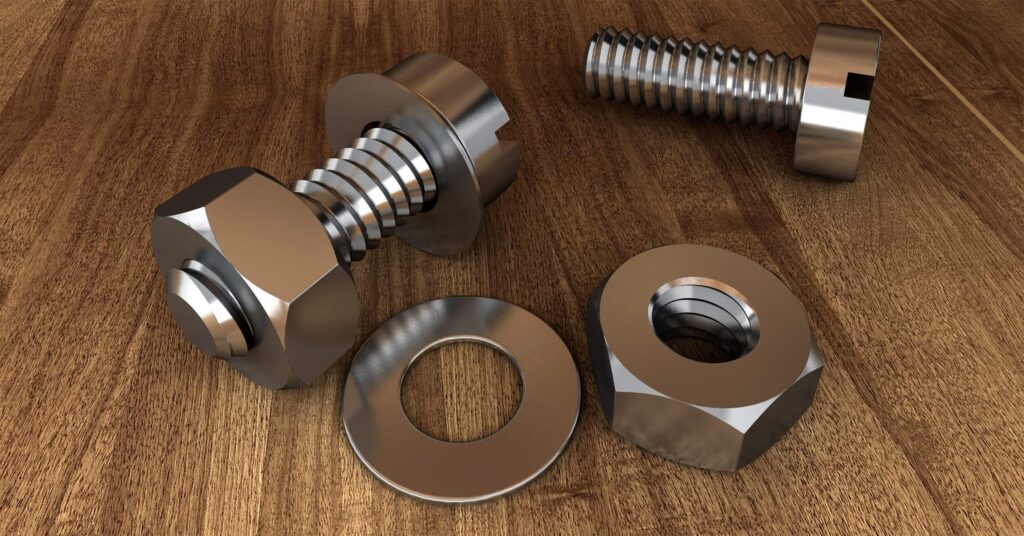When we think about metals, we often wonder about their properties. Is Solidified Steel Beguiling? Tempered steel is a well-known material used in various items, from kitchen appliances to medical instruments. Understanding whether tempered steel is magnetic can help us choose the right kind for our needs. In this article, we will explore what makes solidified steel magnetic, the different types of tempered steel, and what these properties mean for its uses in everyday life.
Different people believe all metals are magnetic, but this isn’t entirely true. Magnetic properties depend on the material’s composition and the types of particles it contains. Treated steel comes in various grades, and its magnetic properties can vary. We will explain the science behind these properties to help you understand more about treated steel and its applications.
What is Treated Steel?
Treated steel is an alloy, meaning it is made by combining different metals. Adding chromium gives stainless steel unique properties, such as corrosion resistance and strength. The percentage of each element can vary depending on the tempered steel grade, which can affect its magnetic properties.
There are several grades of treated steel, but the most common types are austenitic, ferritic, and martensitic. Each type has different properties that influence whether it is magnetic. For example, austenitic tempered steels contain more nickel and are generally non-magnetic. On the other hand, ferritic and martensitic structures can be magnetic due to their iron content.
Types of Tempered Steel
Austenitic Treated Steel
It contains a high degree of nickel and chromium, which gives it excellent corrosion resistance and makes it difficult to magnetize. Common examples of austenitic tempered steel include grades 304 and 316. These grades are often used in kitchen appliances, food processing, and medical equipment. Due to their non-magnetic nature, they are ideal for environments where magnetism could cause issues, such as X-ray machines.
Ferritic Solidified Steel
Ferritic solidified steel contains more iron and less nickel than austenitic types. Because of its iron content, it is generally magnetic. Grades like 430 and 446 are examples of ferritic-tempered steel. This type is commonly used in automotive parts, kitchenware, and industrial applications. While it is less resistant to corrosion than austenitic tempered steel, it is much more protected than regular steel.
Martensitic Tempered Steel
Martensitic tempered steel has a higher carbon content, which gives it increased hardness and strength. Due to its composition, it is also magnetic. Common grades include 410 and 420. Martensitic tempered steel is widely used in cutlery, tools, and other applications where strength and hardness are necessary. However, it is more prone to corrosion than austenitic and ferritic tempered steels.
Why is Magnetism Important?
Understanding whether solidified steel is beguiling is essential for several reasons. In some industries, magnetism can affect how materials are handled, processed, or used in machinery. For example, using non-magnetic stainless steel is critical in food processing to prevent contamination and ensure product safety. In medical applications, using non-magnetic materials is crucial for the safe operation of X-ray machines.
Additionally, magnetism plays a role in the sorting and recycling stainless steel. Magnetic materials can be easily separated from non-magnetic ones during recycling, making it more efficient. This is important for conserving resources and reducing waste in the environment.
Common Uses of Solidified Steel
Is Solidified Steel Beguiling used in numerous applications due to its exceptional properties. Here are some common uses:
Kitchen Appliances
Many kitchen appliances, such as refrigerators, sinks, and cookware, are austenitic stainless steel. Its non-magnetic properties and resistance to corrosion make it ideal for food preparation and storage.
Medical Equipment
Is Solidified Steel Beguiling widely used in hospitals and clinics for surgical instruments, trays, and medical devices. The non-magnetic properties of austenitic stainless steel are essential for X-ray machines, ensuring patient safety and accurate imaging.
Conclusion
In conclusion, whether Is Solidified Steel Beguiling is magnetic depends on its type and composition. Austenitic stainless steel is generally non-magnetic, while ferritic and martensitic types can be magnetic due to their iron content. Understanding these properties helps us choose suitable stainless steel for various applications, from kitchen appliances to medical equipment.
Knowing the magnetic properties of stainless steel is essential for industries where magnetism could pose risks or affect operations. By performing simple tests, we can determine the type of stainless steel we are working with and make informed decisions for our needs.
FAQs
Q: Is all Solidified Steel Beguiling?
A: No, not all Is Solidified Steel Beguiling. Austenitic stainless steel is generally non-magnetic, while ferritic and martensitic types can be magnetic.
Q: How can I test if it Is Solidified Steel Beguiling?
A: You can use a magnet. If the magnet sticks to the stainless steel, it is likely ferritic or martensitic; if it doesn’t, it is expected austenitic.
Q: Why is it important to know if stainless steel is magnetic?
A: Knowing whether Is Solidified Steel Beguiling is magnetic is crucial for safety in medical applications, preventing contamination in food processing, and efficient recycling.
Q: What are some common uses of non-magnetic stainless steel?
A: Non-magnetic Is Solidified Steel Beguiling, which is commonly used in kitchen appliances, medical equipment, and applications where magnetism could cause problems.
Q: What types of stainless steel are commonly used in cutlery?
A: Martensitic Is Solidified Steel Beguiling Beguiling is commonly used in cutlery due to its hardness and strength.

